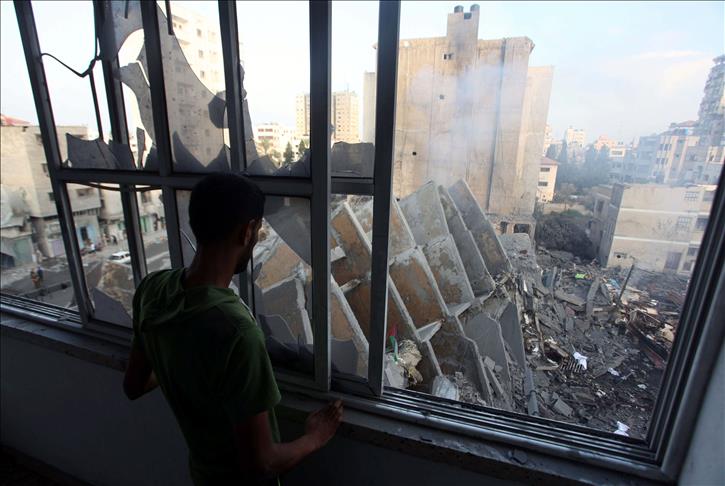
GAZA CITY
Even though a full week has passed since the end of Israel's devastating 51-day onslaught on the Gaza Strip, Mohamed Saleh still finds it hard to sleep or get by without tranquilizers or painkillers.
The constant presence of "buzzers" flying overhead – the word used by Gazans to refer to Israeli reconnaissance drones – keeps him living in fear of renewed bombardment.
"Not only does their loud, annoying sound cause headaches, but they also leave us in constant fear of more aggression, killing and displacement," Saleh, a twenty-something resident of Gaza City, told Anadolu Agency.
Despite a truce deal that ended 51 days of relentless Israeli attacks on the Gaza Strip, Israeli drones continue to fly – often at low altitudes – over the blockaded coastal enclave, providing the Israeli army with information on potential targets.
"I don't know why these drones keep flying overhead," Noha, 38, a housewife and mother of five, told AA. "It's ominous and nerve-wracking."
Adnan Abu Amer, a Palestinian expert in Israeli affairs, believes that Israel is sending a message to Palestinian factions by letting drones continue to fly over the beleaguered Gaza Strip – despite a cease-fire deal that went into effect last week.
"Israel is saying to Palestinian resistance factions: 'We are still watching your every move in case you were mulling a fresh round of fighting'," Abu Amer told AA.
"Israel uses information gathered by these drones to update its list of targets in Gaza," he said.
"Moreover, the continuous presence of Israeli drones with their irritating sounds puts pressure on Palestinian decision-makers to maintain the current state of calm, which Gaza Strip residents have been yearning for," he added.
Israel, a key exporter of unmanned aerial drones, relied heavily on the high-tech, remotely-controlled aircraft during its recently-ended "Operation Protective Edge," which left over 2,147 Palestinians – mostly civilians – dead, 11,000 injured, and thousands of homes destroyed.
"Their buzzing sounds ruin any feeling of security," Saad al-Bardawil, a Gazan in his 50s, said. "The Israelis are probably gathering data for another onslaught – these drones portend only death and fear."
In 2004, Israel began using aerial drones instead of U.S.-manufactured Apache helicopters for assassinating key Palestinian resistance figures.
One operation carried out by Israeli drones was the assassination in 2012 of Sheikh Ahmed Jabari, deputy head of the Ezzeddin al-Qassam Brigades, Hamas' armed wing.
A Palestinian security official speaking anonymously to pro-Hamas website Al-Magd said Israel was using drones to look for two missing Israeli soldiers – one of whom the Qassam Brigades claimed to have captured during the recent onslaught.
Israel says the other slain soldier's body is being held by the Qassam Brigades in the Gaza Strip's Rafah City.
According to Israeli figures, 67 Israeli soldiers and five civilians were killed over the course of the recent offensive against Gaza – the highest military death toll suffered by the self-proclaimed Jewish state since it lost 119 troops in its 2006 war on Lebanon.
By Ola Attalah
Anadolu Agency website contains only a portion of the news stories offered to subscribers in the AA News Broadcasting System (HAS), and in summarized form. Please contact us for subscription options.

